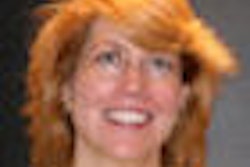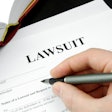
Editor's note: Helaine Smith's column, The Mouth Physician, appears regularly on the DrBicuspid.com advice and opinion page, Second Opinion.
In the December 21, 2008, issue of Dental Tribune, Dr. Ron Jackson discussed the underutilization of inlays and onlays and the overutilization of crowns. First, I would like to state my admiration for Dr. Jackson and his intelligence. He is a brilliant asset to our profession, and his lectures on adhesive dentistry are informative and up-to-date on the rapidly advancing field of adhesives. He is a mouth physician and practices modern dentistry in addition to achieving beautiful aesthetics.
I have used Empress restorations in my practice for more than nine years and have been able to restore thousands of teeth with inlays and onlays. They are technique-sensitive, from the prep design to bonding and occlusion. Often, it requires more thinking and time to prep for an onlay than a crown, and bonding an onlay can be very tricky. Having a great lab technician is another critical component of this equation. Also, using your Cerec machine correctly (if you have one) is critical for achieving proper results.
Conserving healthy tooth structure is important and necessary, as people are living longer lives and keeping more of their teeth. We can offer tooth-conserving restorations today because of the advances in technology. You can always phase into a crown prep after 30 years, but you cannot go backward and restore cut-away enamel. I do not want to do a crown on a 40-year-old patient when an onlay would be structurally appropriate.
Knowing how to plan, prep, and bond an onlay is imperative. Our patients deserve to know all the possibilities. Not every tooth requires a crown, but if that is all you know, then every situation is a crown. But believe me -- it is not the case.
It never made sense to me to drill all the cusps away when a tooth has only one fractured cusp. Once I learned the enlightened world of adhesive dentistry, I felt such relief. I am passionate about providing conservative restorations that I would want in my mouth.
Practicing modern dentistry requires dedication, patience, perseverance, and commitment to provide the best care for our patients. I believe in restoring old amalgams before they fracture teeth and in bonded porcelain restorations. Initially, they take more time and skill to do, but it is worth the pains of this learning curve. This is one aspect of being a mouth physician, and I encourage you to practice less invasive dentistry and provide better options for your patients by utilizing inlays and onlays.
The comments and observations expressed herein do not necessarily reflect the opinions of DrBicuspid.com, nor should they be construed as an endorsement or admonishment of any particular idea, vendor, or organization.
Copyright © 2009 DrBicuspid.com


















